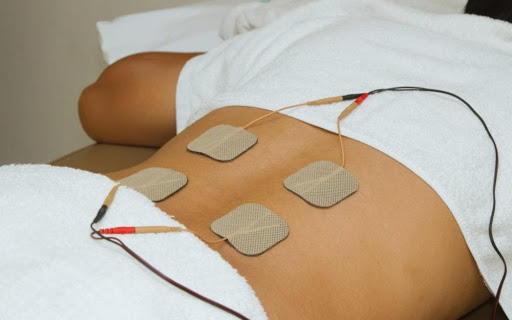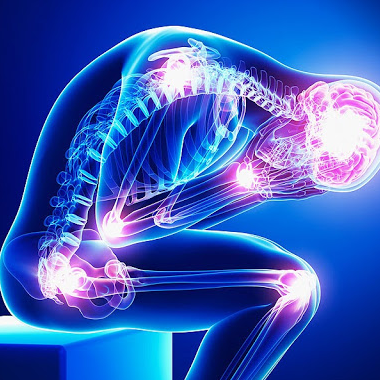Everyone experiences pain and suffering at some point in life. Pain is a natural response of the nervous system that alerts us to potential injury. When an injury occurs, pain signals travel from the affected area to the spinal cord and brain, making us aware of the pain. Typically, these signals stop once the cause of the pain is resolved. However, chronic pain (Chronic Pain) differs from regular pain, as the body continues sending pain signals to the brain even after healing. This condition may last for weeks or even years. Chronic pain can limit mobility, reduce flexibility, strength, and endurance, making daily tasks difficult. More than 1.5 billion people worldwide experience chronic pain.
Chronic pain is defined as pain lasting for at least 12 weeks. It can be constant or intermittent and may occur anywhere in the body, presenting in various forms. Common types of chronic pain include headaches, post-surgical pain, post-trauma pain, back pain, arthritis pain, neuropathic pain (caused by nerve damage), cancer pain, and psychogenic pain (not caused by illness, injury, or nerve damage).
What Causes Chronic Pain?
Chronic pain usually results from an initial injury, such as a sprain or muscle strain, due to nerve damage. Nerve damage can make pain more intense and long-lasting, and even treating the initial injury may not resolve the chronic pain. Sometimes, chronic pain occurs without any prior injury, and its causes may be linked to an underlying condition, such as:
- Chronic fatigue syndrome: Persistent and extreme fatigue often accompanied by pain.
- Endometriosis: A painful condition where uterine lining tissue grows outside the uterus.
- Fibromyalgia: Widespread pain in bones and muscles.
- Inflammatory bowel disease: A group of disorders causing chronic inflammation and pain in the digestive tract.
- Interstitial cystitis: A chronic disorder characterized by bladder pressure and pain.
- Temporomandibular joint dysfunction (TMJ): A condition causing painful jaw locking.
- Vulvodynia: Chronic vulvar pain with no identifiable cause.
- Migraines and other headaches.
Who Is at Risk for Chronic Pain?
Chronic pain can affect people of all ages but is more common in older adults. In addition to age, factors such as injuries, surgeries, gender, and being overweight or obese can increase the risk of chronic pain.
How Is Chronic Pain Treated?
The primary goal of treatment is to reduce pain and improve mobility so that individuals can perform daily activities comfortably. Since the intensity and frequency of chronic pain vary among individuals, doctors customize treatments based on the level of pain, symptoms, and underlying conditions. Chronic pain management often includes medications, medical procedures, lifestyle changes, or a combination of these methods.
- Medications
Several types of medications can help treat chronic pain, including:
- Pain relievers like acetaminophen (Tylenol) or nonsteroidal anti-inflammatory drugs (NSAIDs) such as aspirin (Bufferin) or ibuprofen (Advil).
- Opioid pain relievers like morphine (MS Contin), codeine, or hydrocodone (Tussionex).
- Antidepressants and anticonvulsants.
Medical Procedures
Certain medical interventions can help relieve chronic pain:
- Electrical stimulation: Sending mild electric shocks to muscles to reduce pain.
- Nerve blocks: Injections that prevent pain signals from reaching the brain.
- Acupuncture: Using specialized needles to relieve pain. (Read more here)
- Surgery: To address improperly healed injuries contributing to pain.

Additional methods to alleviate chronic pain include:
- Physical therapy
- Yoga
- Art and music therapy
- Therapy with a pet
- Psychotherapy
- Massage
- Meditation
While there is no definitive cure for chronic pain, it can be managed using these approaches. Since physical and emotional pain are interconnected, chronic pain may increase stress levels. Developing emotional resilience significantly helps in reducing stress and managing pain.
Lifestyle Changes
Take care of your body: Eating well, getting enough sleep, and regular exercise keep the body healthy and reduce stress.
Engage in daily activities: Participating in enjoyable activities and socializing with friends can improve mood and reduce stress. Chronic pain may hinder certain tasks, but isolation and avoiding daily routines can increase pain sensitivity.
Seek support from loved ones: Friends and family can help you stay calm during challenging times, allowing you to live with less stress and greater peace of mind.
Sources: healthline.com, webmd.com












Our Customers' Comments
No comments registered